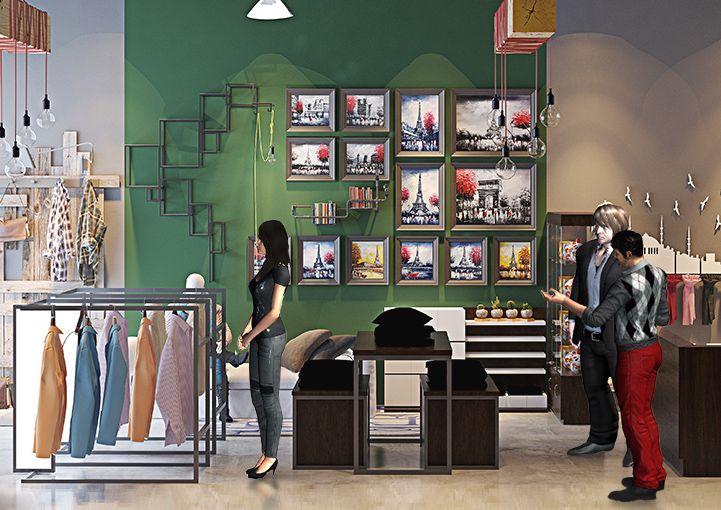3 Key Considerations for D2C Brands Creating Consumer Experiences in the Metaverse

The world might be buzzing about the emergence of Direct-to-Avatar (D2A) revenue opportunities in the metaverse, but it’s important for brands to understand the immense opportunity for Direct-to-Consumer experiences (D2C) that begin in this virtual world and end in the real one. Experiences that result in a real-life physical object being delivered to a person somewhere in the world.
As many brands explore new possibilities for engaging with customers in the digital world, the pandemic, and all the limitations that have resulted from it, has made it more urgent than ever to capture market share in the fast-growing ecosystem that is the metaverse.
“The Stanford Human Interaction Lab coined the term “The Proteus Effect” about how avatars can change behavior in real life. Although Nick Yee and Jeremy Bailenson’s 2007 study focused on avatar overall attractiveness and height, this direct connection between real and digital offers marketers an opportunity to integrate the virtual world in their campaigns with a high likelihood of an increase in consumer purchases in the physical one.” said Samantha G. Wolfe, NYU Adjunct Professor and Founder of PitchFWD to Forbes Magazine.
The metaverse offers a way to elevate the online customer experience far beyond a typical ecommerce store. According to Salesforce’s State of the Connected Customer report, eighty percent of consumers say they now consider the experience a company provides to be as important as its products and services.
Designer fashion brand uses the metaverse to push the boundaries of shopping experiences
In 2020, Balenciaga created a “fashion video game” called Afterworld: The Age of Tomorrow to present their Fall 2021 collection. Although it was planned pre-pandemic, its launch could not have been more timely. In the video game, guests or players entered a post-apocalyptic world in 2031 to explore different “Zones” – a Balenciaga store, a forest rave – where models either stood or danced wearing the fashion house’s new collection. It gave participants a vivid space for exploration and curiosity, going beyond what is possible with in-person shopping or events. By meeting (and exceeding) this need for wonder, Balenciaga captured customer’s attention by giving them an innovative way to view and examine the clothes on 3D avatars.
Rich opportunities for functionality, interactivity, and integration in the metaverse
However, the Balenciaga experience could have taken things further. What if instead of only viewing the clothes customers could try them on and purchase them without leaving the virtual environment? Perhaps they could purchase a virtual outfit for their avatar (now possible with their first in-game fashion drop in Fortnite) as well as the real deal to be delivered to them IRL? What if they could shop together with friends and consult with a sales person in the game (or offline, if they so prefer)? Within the immersive 3D world of the metaverse, all of these options are entirely possible--this is about taking traditional ideas of omnichannel retail to the next level.
To make the most of what the metaverse can offer, there are three key considerations every brand should keep in mind when building their experience.
1. Connect the metaverse with real-life systems/processes
On a practical level, whether in the game engine or in the streaming platform, determine which integration points are needed to sync your online and offline processes--think POS systems, CRM systems, payment processing systems, and more--and they can be built into your experience.
On top of that, data retrieved from your interactive 3D experience can also help inform marketing and product development strategy moving forward. Understanding where consumers spent their time within the experience, which items were picked up most often, what colours were most popular, etc., are just a few of the data points that integrations can provide.
2. Ensure real-life products sold through the metaverse meet expectations
It’s of paramount importance to build trust with your customers so that they believe what they purchase through the metaverse will be exactly what they receive in real life. Digital twins of your product, whether it’s a car or a handbag or even a home, are the key to ensuring that.
According to a recent report by Dentsu, the world’s largest advertising agency, transparency about your product and appealing to customer emotions go hand in hand--emotions will be one of the main factors that impacts their decision-making process.
“By 2030, appealing to emotion will become an even more powerful way of asserting truth than objectivity or rationale/critical thinking. Fuelled by social media and the development of AI-generated deepfakes, the blurred lines between fact and fiction will make many consumers more inclined to go with their gut and prioritize emotional responses in decision-making. This complex terrain will make it increasingly important for brands to focus on transparency to substantiate any claim they make about their products or services, as well as providing novelty."
Digital twins, which are a real-time digital counterpart of a physical object or process, will ensure that any changes in your product as it moves through the product development life cycle and manufacturing process are immediately captured in its virtual representation.
3. Optimize your customer service experience in the metaverse and beyond
For most brands, creating a true omnichannel experience which allows them to serve the customer however, whenever, and wherever they wish to engage should be front of mind. This approach involves the integration of various channels in order to serve the customers in a customized fashion through their channel of choice. 74% of customers have used multiple channels to start and complete a transaction, while 69% of customers believe companies should offer new ways to get existing products and services in the wake of the pandemic.
However, it is important for brands to ensure they balance automation with human-first interactions. Deciding which routine processes can be automated and which require a human-led approach can make the difference between a positive and negative customer experience. For example, Foresight Factory¹ reports that 69% of consumers globally prefer making a complaint about a product or service to a human.
With all the rich data about customers that can be gathered in the metaverse, highly tailored customer experience journeys are not just possible, but expected.
“Tech’s growing ability to infer customers’ emotional states promises a future of highly tailored and humanised CX journeys. Customers’ existing personal data, including dwell time and purchase history, will be increasingly harnessed to power empathetic interactions with brand representatives—human, chatbot or other.”
The last mile to the commercial metaverse
Of course, no metaverse experience is worth its weight unless it’s available to as many end users as the brand wants. That’s where we come in. PureWeb’s Reality platform enables an easy, direct point of entry for customers anywhere in the world to enter the metaverse from their smartphone, tablet, or computer using a simple URL. It also allows key integrations for businesses to connect their metaverse experience to existing real-life systems and processes. Interested in learning more? Connect with a specialist on our team now.
References:
- Foresight Factory, ‘Annual Global Consumer Survey’, 2018.


